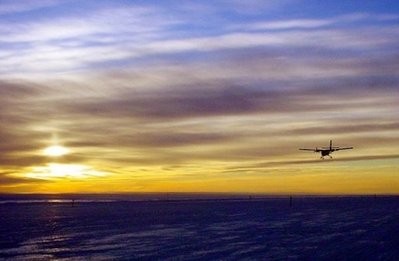SYDNEY (AFP) – Australian explorers on Sunday credited record low tides and a blue moon for the "one-in-a-million" discovery of one of the world's first aeroplanes buried in Antarctic ice.

The monoplane, which was the first aircraft off the Vickers factory production line in Britain just eight years after the Wright brothers' first flight, was taken to Antarctica by Australian explorer Douglas Mawson in 1911.
It had crashed on the Australian mainland during a pre-polar test flight and had its badly damaged wings removed, but Mawson decided he wanted to take it to the Antarctic to use as an "air tractor" to pull his sledges, officials said.
"It wasn't terribly successful but he did take the engine back with him," Australian conservationist David Jensen told AFP.
"He left the aircraft and they fitted it out with special skis and also a special tail rudder."
Mawson abandoned the plane in the Antarctic in 1931.
Armed with magnetic imaging equipment and other technology, three successive teams of conservationists and scientists from the Mawson's Huts Foundation searched for the fuselage, which was last sighted almost totally buried in ice in 1975.
But it was the unprecedented combination of historically low tides, prompted by a blue moon -- the second full moon in a calendar month -- and unprecedented melting of the ice which led to its chance discovery on New Year's Day, Jensen said.
"It was probably one chance in a million that these conditions just allowed us to spot it," he said.
"One of our heritage carpenters was actually just wandering along the edge of the harbour... and he just by chance spotted the piece of the metal amongst the rocks."
"You talk about once in a blue moon, well it was so true."
Jensen said the "ecstatic" team quickly recovered the fragments of the fuselage and would likely bring them back to Australia for treatment at the end of January.
























